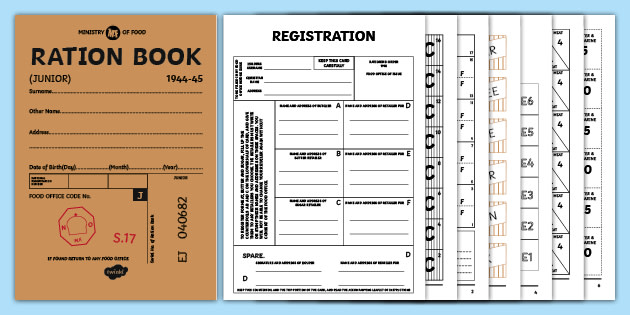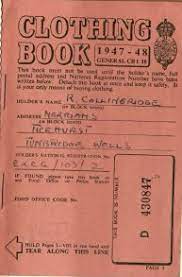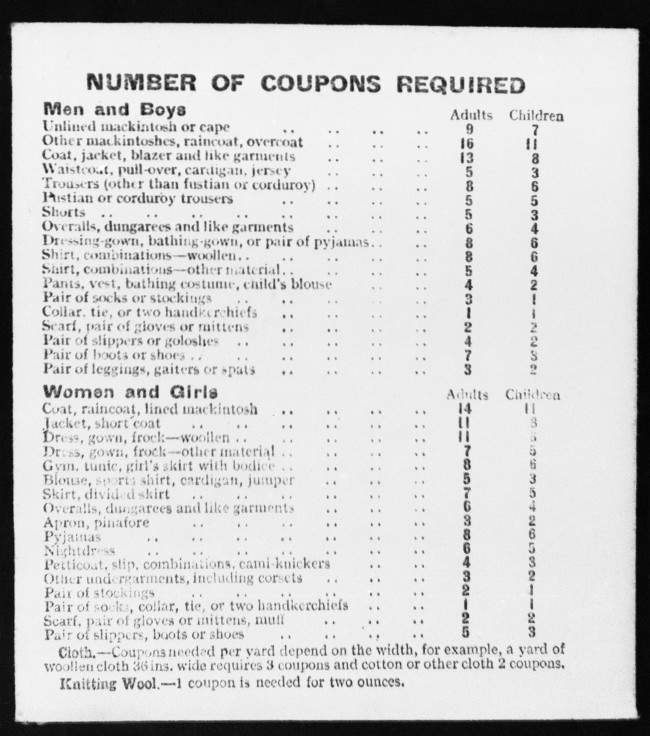The Martin’s Memories series has been reproduced with the very kind permission of Tony Martin from his posts on the Old Blaydon and Old Winlaton Facebook group.
OLD Blaydon and OLD Winlaton | MARTIN’S MEMORIES 9 | Facebook
During the Second World War and up until 1954, Britain was subject to rationing, not only food, but clothes, fuel and many household goods. The idea was to maintain an adequate and even supply in a country, which in 1939, imported almost 70% of all our food and with the main lines of supply threatened by enemy action. The actual goods and amounts available varied depending on the situation. Fruit and vegetables were never rationed, although the range was very limited. Bread was not rationed during the war, but came in soon after VE Day.
Food supply and hence, food rationing was the responsibilIty of the Ministry of Food, who had their main office in Blaydon in the basement of the Church Hall with access through the east door. The other door was the office of the Ministry of Pensions and National Insurance. The Ministry of Food issued everyone with a ration book and we all had to register with a retailer to get any item that was rationed and that included dairy produce, tea, all meats, sugar, preserves, milk and sweets. Clothes, soap, coal were also rationed as was bread at a later date. One could only obtain petrol if one could prove essential use and this meant that those people who had cars just for pleasure had to take them off the road for most of the war. When buying rationed goods, you had to present your ration book and the retailer either removed coupons or stamped the book to show that you had received the week or the month’s supply. Separate clothing coupons were issued as were petrol coupons once that became generally available again.
The weekly ration per person in 1942 (the year of my birth) was as follows:-
2 oz (ounces) each of butter, cheese and tea.
4 oz each of bacon or ham, margarine and cooking fat (normally lard)
8 oz sugar
3 pints of milk (there was an extra allowance for nursing and expectant mothers)
1 fresh egg (plus an allowance of dried egg)
Other meat, apart from bacon or ham, to the value of 1 shilling and twopence ( and that could get you 2 chops)
In addition, one could get 1 lb (454 grm) preserves every 2 months
12 oz sweets every 4 weeks
1 cwt per household per week
48 clothing points per year (this was cut to 24 in 1945). Clothes shops displayed the point system for the clothes they sold. Rationing also meant that shopping became a bit of an expedition. We got our eggs from Peter Craig on Ann Street. meat from Walter Rea in Winlaton, dairy produce from the Meadow Dairy on Church Street and tea, sugar, bacon and jam from the Coop. When bread was rationed Sally Charlton was the supplier and you had a choice between Hunters (maroon lorry) or Hendees (blue lorry). Coal was also from the Coop. Clothes were bought where they could be got and points removed from the clothes points book. Many people supplemented their ration from produce grown on their allotment.
People bottled fruit collected from the countryside and I remember Aunt Nell saving the cream from her milk and this was placed in a jar with a screw top and then placed in a churn my uncle had made for her. I was quite often set to turn the handle until the cream became an extra ration of butter.
People saved their meat for Sunday dinner and if there was any left over it could always be made into Shepherd’s Pie for later in the week. Chicken was a real and seldom treat. Fish was not rationed. Neither was ofal so we were fed tripe and liver in large measure. When potatoes were scarce, we made mash out of a powder which went under the name POM.
As a family, we were lucky in that my Aunt Glady, my mother’s sister lived in Australia and every autumn she sent us a parcel of raisins, currants, sultanas and peel so that Christmas pudding, cake and mince could be made. Her eldest daughter had met a British sailor from Bournemouth during his time with the Fleet in the Pacific and at the end of the war, he visited the family in Park Avenue before returning to Australia to get married to my cousin. He gave me my very first banana….it was soft with a black skin and, for a while, I thought all bananas were black. Waste not, want not was the motto and everything was used to best advantage. We did not have coffee so we used essence, chicory or a tin of coffee called Bantam. I also remember having to use carbolic soap and in my childhood, Friday night came with a special treat…..after your weekly bath and hair check for nits or dickies as we called them (your hair was combed with a steel comb over a metal tray), you were given a dose of licorice powder to keep you regular followed by the week’s star prize …a sweet!! Other treats provided by the Ministry of Food were concentrated orange juice to keep our vitamin C levels up and cod liver oil, a spoonful of which was also taken daily. They also provided National Dried Milk for babies.
We survived. Our diet was probably healthier than we have today, but the end of rationing was slow to materialise after 1945. I can remember in the immediate postwar years children often got handouts from Commonwealth countries. I was in the top class of Blaydon West Junior School when we received an apple each donated by the Government of British Columbia. Clothes and furniture bearing the utility symbol were on sale for a long time after 1945 and I remember getting a tallboy from Blaydon Coop for my bedroom. And then one Monday lunch time, sometime in 1954, it had ended and I could visit Sally Charlton’s shop and buy 2 ounces of black bullets without my ration book. Happy Days were here again!!
Illustrations



